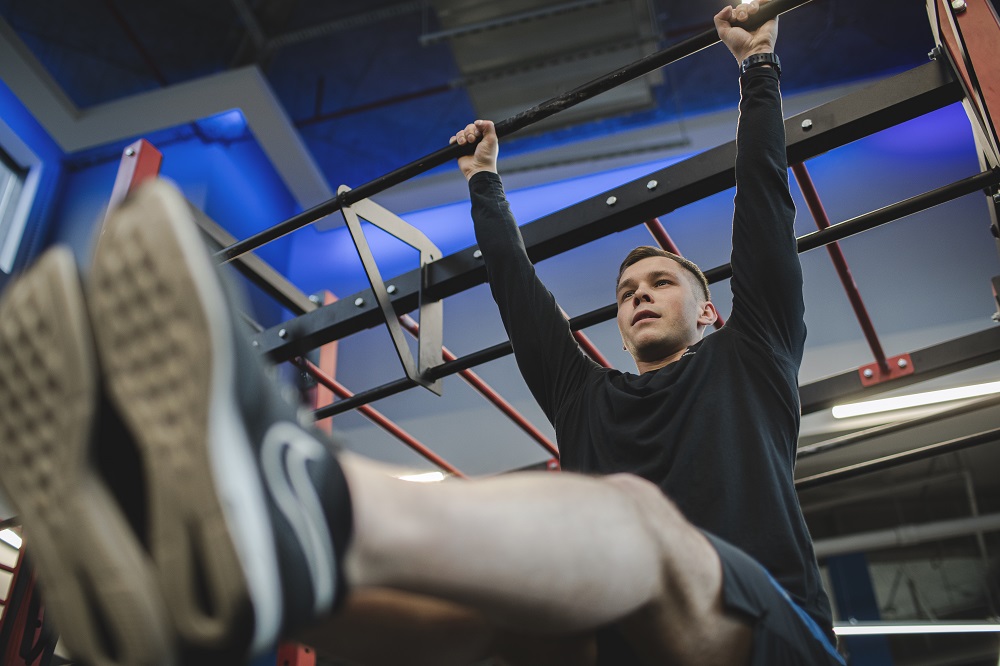Running in winter may seem very unpleasant to inexperienced people. Slippery surface, bitter frost, residual snow and rapidly falling dusk are conditions that do not necessarily motivate you to go to training. However, it is at this time of year that it is best to start building your form. The effects of well-conducted winter outdoor training can be amazing. Check how to prepare your winter running conditions.
Many people in the period from the beginning of November to the end of February, instead of covering the next kilometers along forest paths, choose a gym and treadmill training. It is an alternative to running in the cold, but has some significant drawbacks. First, the brain is not as oxygenated as it does after outdoor training. Second, you do not have to deal with uneven terrain and strong winds on the treadmill – less calories are burned. Third, trail running engages some parts of the body better, such as the biceps muscles of the legs. Fourth, boredom – a dozen or so kilometers on a treadmill without a good movie is an impossible task for many people. That is why it is worth breaking through and opting for outdoor running in winter.
HOW TO PREPARE FOR A RUN – TRAINING PLANNING
When going for the first winter runs, first of all, inform someone about your plans. Set a route and determine the approximate time you intend to come home. In frosty conditions it is easy to get injured, which can be a big problem. Take your charged phone with you – if any accident occurs you will quickly contact someone who can help.
Try to choose snow-cleared paths or those with heavily packed snow. Even if you have shoes with non-slip overlays or a special winter tread, you will subconsciously bend your knees more to feel more stable on icy surfaces. This promotes overload and injuries. If you are going for a running training car, make sure you take a second set of clothes with you and change clothes as soon as you get back to the car. Traveling in cold, sweaty clothes will not be pleasant and may lead to the body becoming cold. When running around your home, always plan your route so that you end your training as close to the entrance to the warm four corners as possible.
HOW TO START RUNNING IN WINTER – WARMING UP
Preparing the body to run in the cold is a bit more difficult than in warmer weather. Warming up is very important and should not be skipped. If possible, do it at home. If you need to warm up outside, be sure to exercise high. A few dynamic strides, skips, stretches and strokes are the absolute basis for preparing for winter running. Warming up will not only prevent injuries, but also help your muscles achieve their maximum range of motion.
WHAT TO RUN IN WINTER?
Many novice runners make the mistake of wearing too many cold running clothes or too thick clothes made of inappropriate materials. This leads to overheating during training or inadequate drainage, making it easier to catch a cold.
How to prepare for running in the cold? First of all, it is worth choosing thermoactive clothing and underwear. Materials such as Gore-Tex or Coolmax guarantee warmth and good moisture management. Avoid clothes made of cotton. Wear a jacket or sweatshirt that provides excellent protection from the wind. It’s also a good idea to wear a few thinner layers. Then, in case of too high temperature, you can always throw off some of your training clothes.
Good shoes are also essential. Typically, models designed for winter training are equipped with a waterproof membrane and a special tread, but even they may eventually get wet. Then a spare pair of socks that effectively wick away moisture may be a good idea. If you feel that your shoes are soaking wet, shorten your training session and return home.
When the temperature drops below freezing, be careful not to expose too much skin. Hats and gloves are a must. When the frost is really boring, a balaclava or a tall chimney can also be useful, which will warm the air entering your lungs. It is good to smear the skin on the cheeks with petroleum jelly or a cream without water. If the temperature drops below -15 ° C, choose rest or other indoor activities.
RUNNING IN WINTER – SAFETY AND HELP OF EXPERTS
Although it is best to run around noon, when the sun warms the most, not everyone can afford to train at this time. You will probably start many winter trainings after dark. Therefore, it is important to ensure adequate visibility. Check if your clothing has large reflective elements, if not – take a reflective strip or pendant with you and choose lighted routes. When you need to do evening training in a forest or a dark park, take a headlamp with you, but remember that this is not a guarantee of perfect visibility.
Even the most experienced runners are more likely to suffer injuries and minor injuries on unlit or icy routes. If they do, it is worth taking advantage of professional physiotherapy. At MIND YOUR BODY you will find the best specialists who will quickly get you back on your feet and tell you how to make winter training even more effective. If you plan to run all year round, please contact us and we will prepare you for the winter season.



